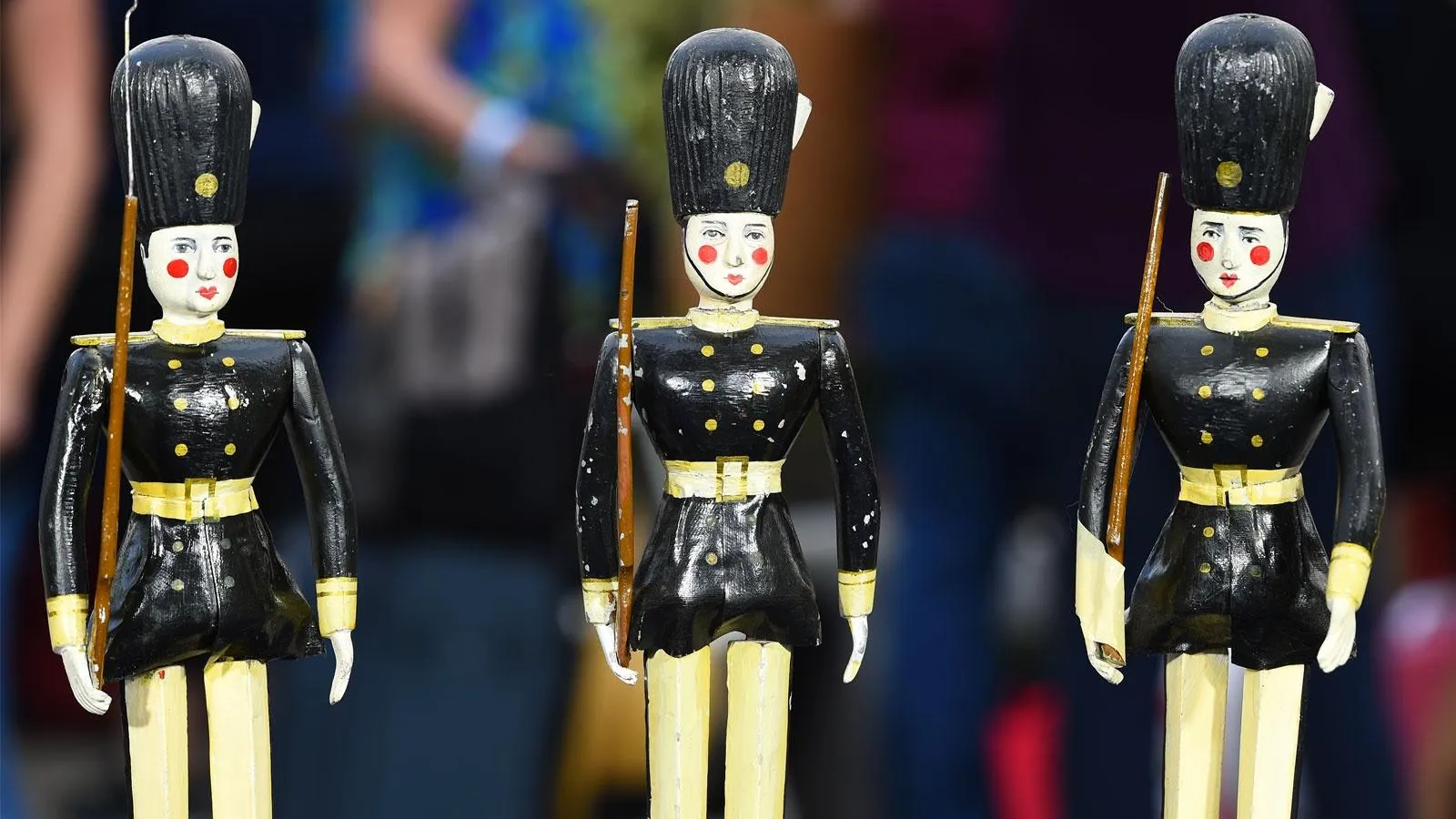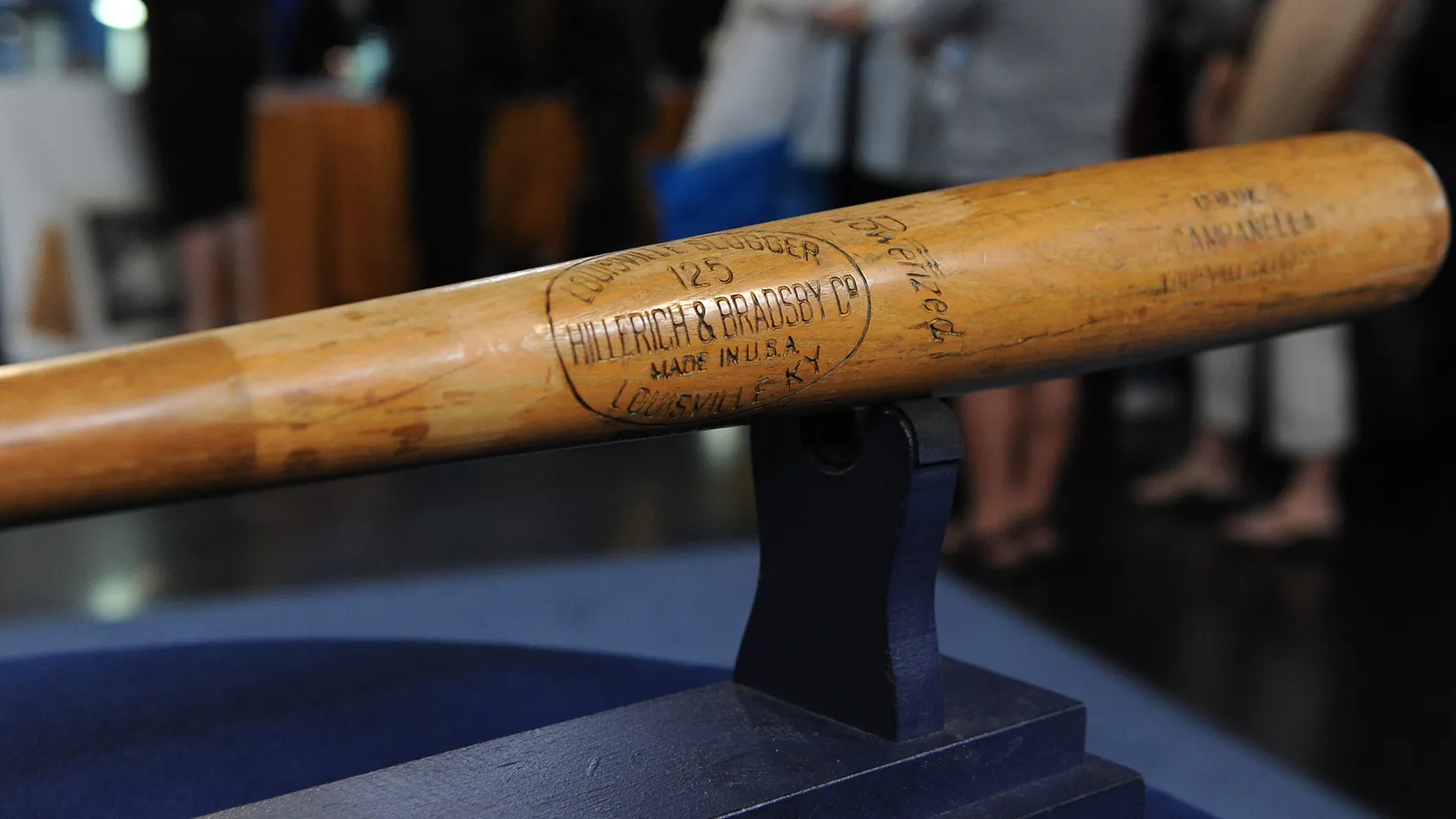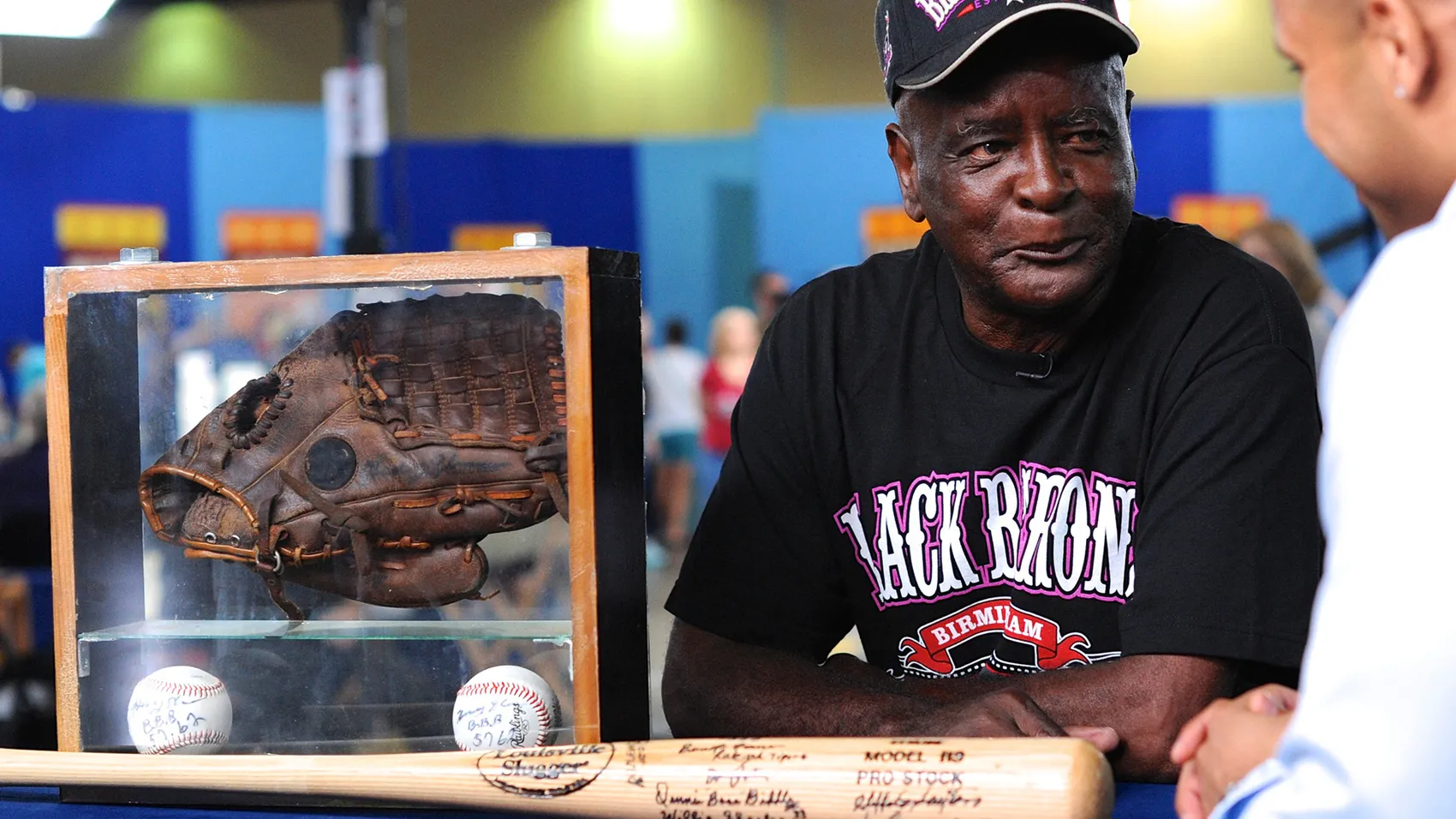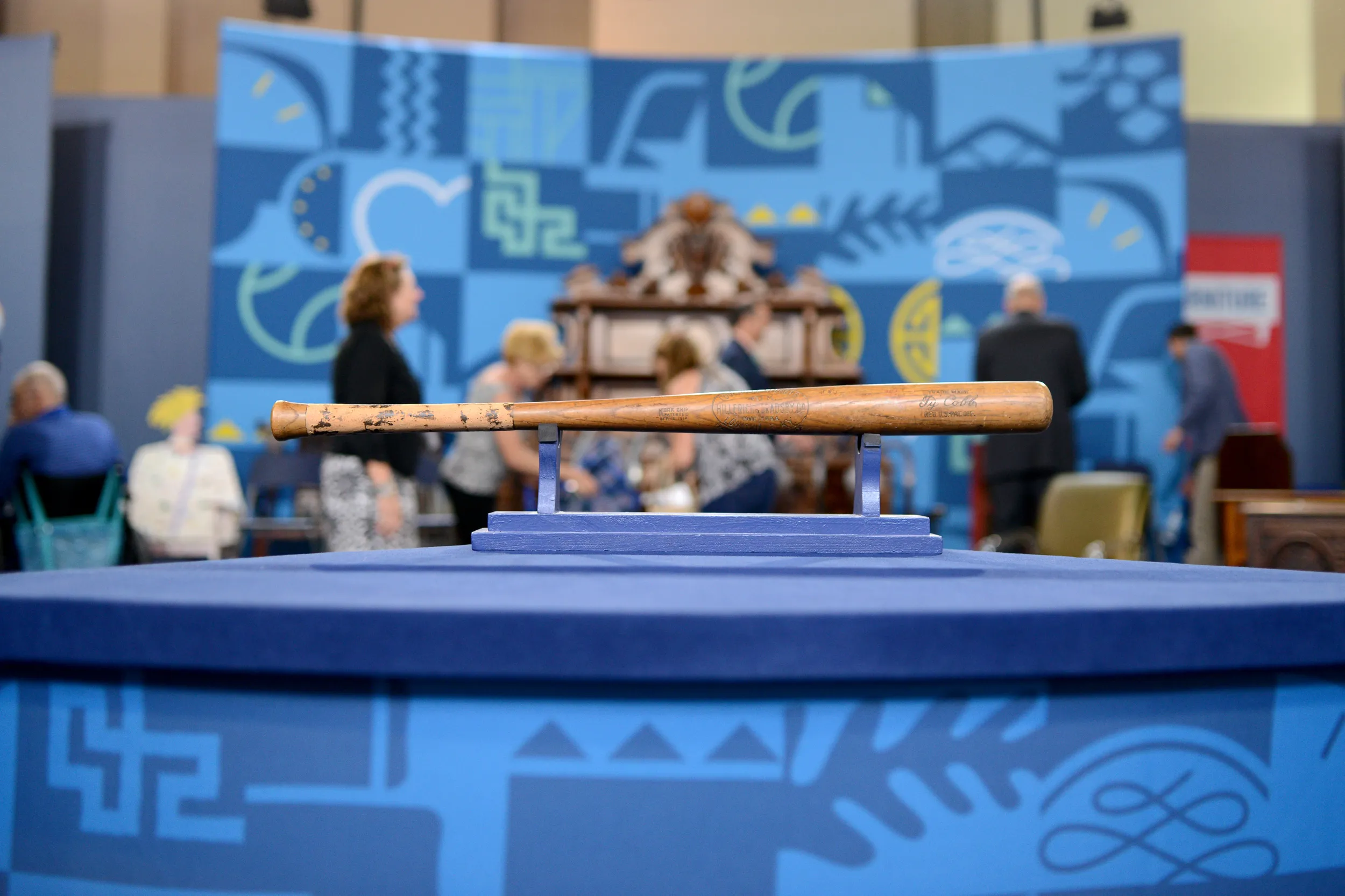Signed Joe DiMaggio Game-used Bat, ca. 1946
GUEST: Well, it's a, a Joe DiMaggio autographed bat. I got it through an auction in New Jersey back in 1976.
APPRAISER: First, let's talk about Joe DiMaggio, widely considered the best ballplayer ever, played 13 seasons, all for the New York Yankees-- 1936 to 1951.
GUEST: Right.
APPRAISER: And why only 13 seasons there? Because he also served two years in World War II. Nine World Series championships. A 13-time All-Star, 2,214 hits. He finished up with a career batting average of .325. Most known for the 56-game hitting streak that still stands today.
GUEST: Right.
APPRAISER: Known as Joltin' Joe and the Yankee Clipper. And I don't know how I could be more excited about an old wood bat to come in than this one today. Tell me a little bit more about how you, how you acquired it.
GUEST: I put a bid in through mail. I bid $130 for it. A gentleman back east bid $130 also. So we had a three-way conversation via phone. So I bid $135, and he bid $140. So I went up to $147, and he said, "That's too rich for me."
APPRAISER: What year was this?
GUEST: This was 1976.
APPRAISER: As we're here today, in 2019 dollars, would be the equivalent of about $650 or so.
GUEST: I made $150 weekly, and I put $147 for the bat. My wife wasn't too happy.
APPRAISER: Tell me more about the provenance the auctioneer provided when you were bidding on the bat.
GUEST: It was game-used, autograph, Joe DiMaggio bat. The lady used to work for the Yankees in the front office. Her husband was a collector, and she would get all these items for him. He passed away one year and she didn't know what to do with all his stuff. So she put everything up for auction.
APPRAISER: Did you ever meet Joe?
GUEST: Yeah, I met Joe DiMaggio. I heard that he was doing an autograph signing at a college in San Jose. Very small line, I mean, nobody was there. I was telling him about the bat, and I asked him, "Why is it black? "Why is it burnt? And why is it, uh, sanded?" He said, "Well, you got my bread-and-butter bat." He said, "You know, I get a shipment, "I go through the bats, "and I pick the one that feels good. "I dip it in olive oil, and I sprinkle rosin on it, "and then I put it under a flame. "When it sets, I sand it smooth, and that's my bread-and-butter bat," he told me.
APPRAISER: That's awesome.
GUEST: It was awesome. And one thing else I remember about Joe was, uh, he had huge hands. His hands were huge.
APPRAISER: What year was that?
GUEST: It was 1994.
APPRAISER: Did you have anything signed that day?
GUEST: He signed a baseball for me.
APPRAISER: And how much did that cost in 1994?
GUEST: $30. I was gonna bring the bat.
GUEST: But I didn't know for sure that he was gonna be there, and I didn't want to bring it out.
APPRAISER: What you talk about is exactly what we want to see to authenticate a Joe DiMaggio game-used bat.
GUEST: Mm-hmm.
APPRAISER: The special characteristics that were unique to him.
GUEST: Right.
APPRAISER: And we know from his stories, he told people, like he told you, we know that it's documented about some of these features we're gonna go over about this bat. So it is known that on his game-used bats that he did sand the barrels. The other thing about this bat, too, is, we see the tape on the handle, We're gonna assume that's because this bat cracked. But what a lot of use this bat saw before it eventually took a crack.
GUEST: The bat came out in '47 and that was his MVP year.
APPRAISER: From the Louisville Sluggers that I've reviewed, 1946 to 1948 is when these particular specs were part of Joe's order.
GUEST: Right.
APPRAISER: So we have the bat at 35-and-three-quarters inches. We have it at 35.7 ounces. That's not uncommon for them to be slightly under 36 ounces because of the sanding and the use.
GUEST: Right.
APPRAISER: This particular Louisville Slugger game-used Joe DiMaggio bat is made of ash, and then the last key component, of course, is the serial number on the knob. Are you familiar with that?
GUEST: D29, that's a small knob.
APPRAISER: Yeah. Yeah, so part of the Louisville Slugger process was, the players would order these bats to their specifications.
GUEST: Right.
APPRAISER: And they would vary throughout their career. They would change size and weight. Joe DiMaggio was only known to change about half an inch on the size of his bats over his career, but that serial number would not be something that would ever get shipped to a hardware store, or a sporting goods store, anything like that. That number is unique to his game-used bats.
GUEST: Right.
APPRAISER: It's also signed by Joe DiMaggio. They're hard to come by, they're very desirable to the collectors. Auction records have been databased now for, 20-so years, I can find maybe about 50 examples that have come to auction. I am super-excited about this bat. I would place a value at auction of $80,000 to $100,000.
GUEST: Oh! Mm. (chuckles) Awesome. Great, that's... that's great to... Great to hear. Great to hear. You know, I'll, I'll never sell it.
APPRAISER: I would have a value placed on it for insurance purposes of $125,000.
GUEST: Wow.

$80,000 Auction
$125,000 Insurance
Featured In

episode
Crocker Art Museum, Hour 1
Head to California’s capital city for appraisals at Crocker Art Museum. One is $80K-$125K!
Baseball Bat
Understanding Our Appraisals
Placeholder






